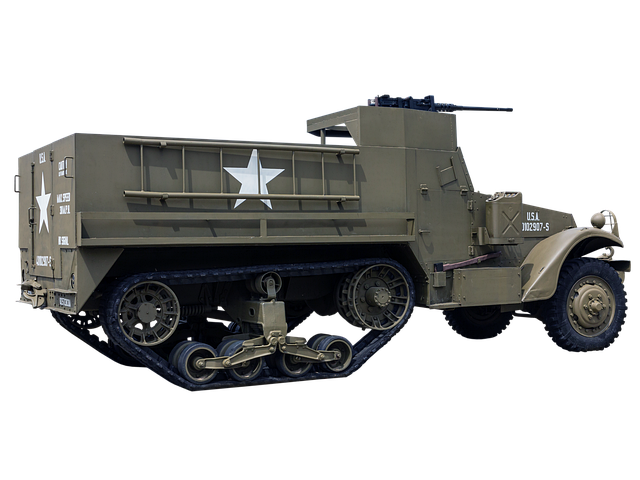In the trucking industry, managing risks is vital for safety, efficiency, and sustainability. Scalable trucking coverage includes implementing risk assessment protocols, using telematics for real-time monitoring, and prioritizing regular vehicle maintenance. Proactive safety measures like advanced driver assistance systems (ADAS) and data-driven maintenance schedules enhance safety and reduce costs. Regular inspections and repairs through structured maintenance programs minimize unexpected breakdowns and improve operational efficiency. Continuous evaluation and adaptation ensure comprehensive risk management across the entire fleet, leveraging technology and data analytics for proactive safety interventions.
In the dynamic world of trucking, mitigating risks through proactive safety measures and regular maintenance is paramount. This comprehensive guide explores the multifaceted approach to enhancing safety in trucking operations. We delve into understanding the nuances of risks specific to the industry, presenting a scalable strategy for proactive safety. Additionally, we highlight the significance of structured maintenance programs and provide insights on measuring success through continuous improvement. Embrace a culture of safety with our tailored, scalable trucking coverage solutions for optimized operations.
Understanding Risks in Trucking Operations

In the dynamic landscape of trucking operations, understanding risks is paramount for ensuring safety and efficiency. Trucking companies face a myriad of hazards, from mechanical failures to driver fatigue and adverse weather conditions. Each of these risks poses potential threats not just to the drivers, but also to cargo integrity and environmental sustainability. To counter these challenges, embracing scalable trucking coverage emerges as a strategic imperative. This involves implementing comprehensive risk assessment protocols that identify vulnerabilities across the supply chain. By adopting advanced technologies such as telematics and real-time monitoring systems, companies can proactively detect and mitigate potential issues before they escalate.
Regular maintenance plays a pivotal role in this context. Scheduled servicing not only prolongs the lifespan of vehicles but also enhances their operational reliability. Moreover, scalable trucking coverage encourages a culture of continuous improvement where lessons learned from incident analysis are leveraged to refine safety protocols. This holistic approach ensures that trucking operations remain resilient, adaptable, and secure in the face of an ever-evolving industry landscape.
Proactive Safety Measures: A Scalable Approach

Proactive safety measures offer a scalable approach to risk mitigation, particularly in sectors like trucking where comprehensive coverage is essential. Unlike reactive strategies that kick in only after incidents occur, proactive measures involve continuous monitoring and optimization. By leveraging technology such as telematics, fleet managers can gain real-time insights into vehicle performance, driver behavior, and operational conditions. This data enables them to identify potential hazards early on and implement targeted interventions.
For example, scalable trucking coverage can be achieved through advanced driver assistance systems (ADAS) that alert drivers to potential collisions, monitor lane departure, and adjust speed accordingly. Regular maintenance schedules, integrated with these data-driven insights, ensure that vehicles are in optimal condition, reducing the likelihood of breakdowns or mechanical failures. This holistic approach not only enhances safety but also contributes to cost savings by minimizing downtime and extending vehicle lifespan.
Implementing Regular Maintenance Programs

Implementing regular maintenance programs is a cornerstone of proactive safety measures in the trucking industry. These programs, designed with a scalable trucking coverage approach, ensure that vehicles undergo routine inspections and repairs. By adopting such practices, companies can significantly reduce unexpected breakdowns, enhancing both road safety and operational efficiency.
A well-structured maintenance program involves scheduling tasks like engine checks, tire rotations, brake inspections, and regular fluid changes. This proactive strategy not only extends the lifespan of trucks but also minimizes downtime, as issues are identified and addressed before they escalate. Scalable trucking coverage allows for flexible planning, catering to diverse fleet sizes and ensuring no vehicle is overlooked in the pursuit of optimal safety and performance.
Measuring Success: Continuous Improvement and Adaptation

Measuring success in risk mitigation through proactive safety measures and regular maintenance is an ongoing process that requires continuous evaluation and adaptation. By implementing scalable trucking coverage, companies can ensure comprehensive risk assessment and management across their entire fleet operations. This involves regularly reviewing and analyzing data to identify areas of improvement and potential risks. Through advanced technologies and data analytics, it becomes possible to track performance metrics, monitor driver behavior, and predict maintenance needs, enabling proactive interventions.
Continuous improvement ensures that safety measures stay relevant and effective as industry standards evolve. Adapting to new challenges and technological advancements in the trucking sector is crucial for maintaining a safe and efficient fleet. Regular reviews should focus on minimizing accidents, reducing downtime due to maintenance issues, and enhancing overall operational efficiency. By setting measurable goals and continually refining strategies, trucking companies can achieve a higher level of safety and operational excellence, ultimately contributing to a more robust and scalable trucking coverage.
In conclusion, mitigating risks through proactive safety measures and regular maintenance is paramount in the trucking industry. By understanding the unique risks associated with operations, implementing scalable trucking coverage solutions like comprehensive safety programs, and fostering a culture of continuous improvement, carriers can ensure safer roads for everyone. Regular maintenance programs not only extend vehicle lifespan but also prevent costly breakdowns and accidents. Ultimately, a proactive approach to safety is a game-changer, enabling operators to navigate the challenges of the road with confidence and efficiency.
